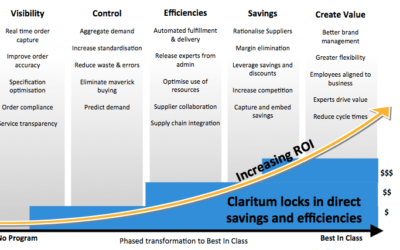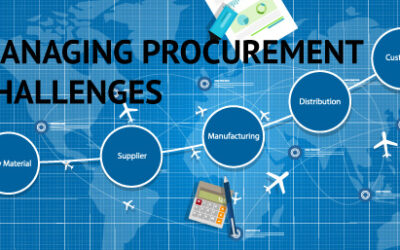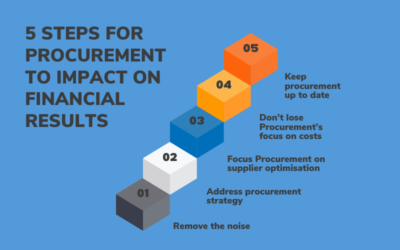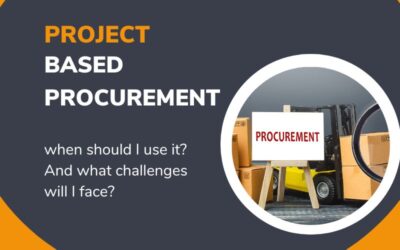1: Introduction
Category procurement is perhaps the most common break down for Procurement teams and certainly is the most focused on in terms of written articles. Often these articles are focused on specific categories and their respective challenges.
It would be a very long article if I were to try to cover category by category and explore all aspects. I, therefore, chose to keep this article at the highest level and explore the nature of category-based procurement.
There are three primary areas to category procurement.
- The sourcing of products and/or services within the Category;
- the management of suppliers associated with the category;
- and strategic planning for this category.
CIPS define category management as: “the entire science of the procurement subject applied to a single genre of expenditure”. “As such, a category manager is the ‘CPO of their category’ and carries a weight of responsibility for their organisation’s application of the category – especially for direct categories that support strategic supply lines.”
2: The Strategic Nature of Focusing on a Category

3: Typical Steps Associated with Category Purchasing
- Risk and impact assessments associated with the supply of the goods and services within a given category.
- Supplier and Market research. Including identifying any areas to be focused on at the Category or a Strategic level within the business.
- Engagement in supply chain optimisation and innovation with key suppliers
- Monitoring of the supply chain and the environment. The environment is used in its widest context and could include economic, competitive, geopolitical and weather-related risks, to name some of the key ones.
- Throughout all of the above, focus on sustainability within the total supply chain and any impacts associated with this.
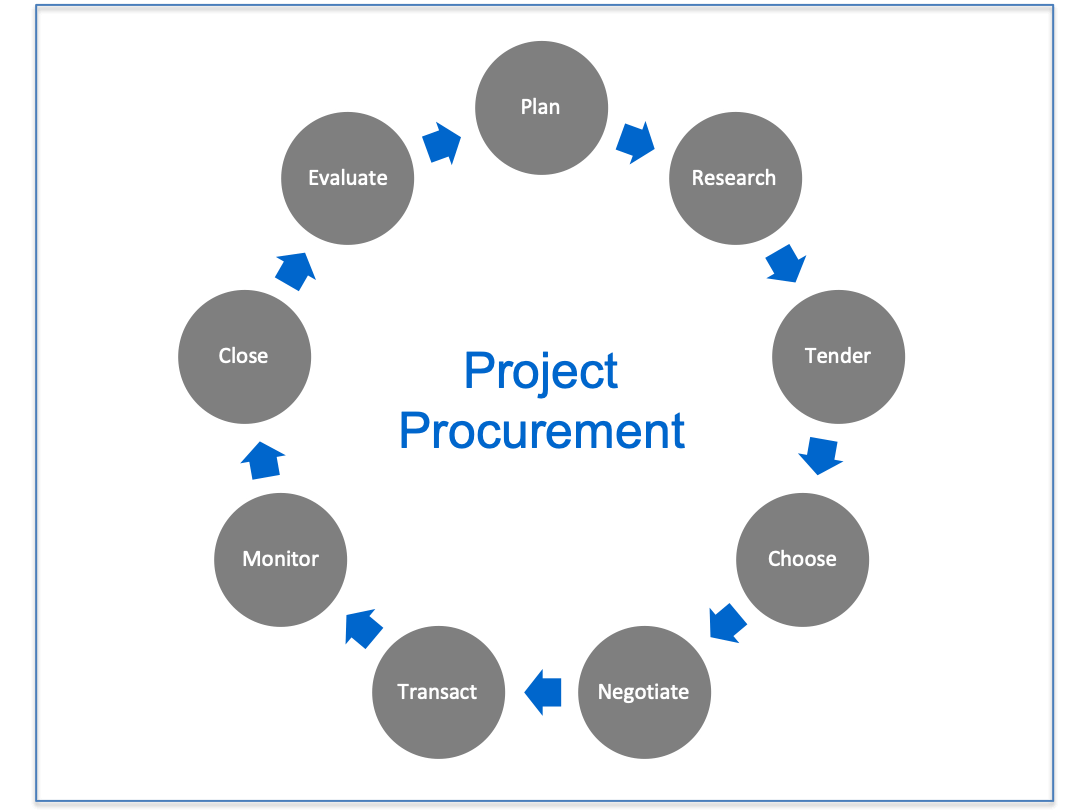
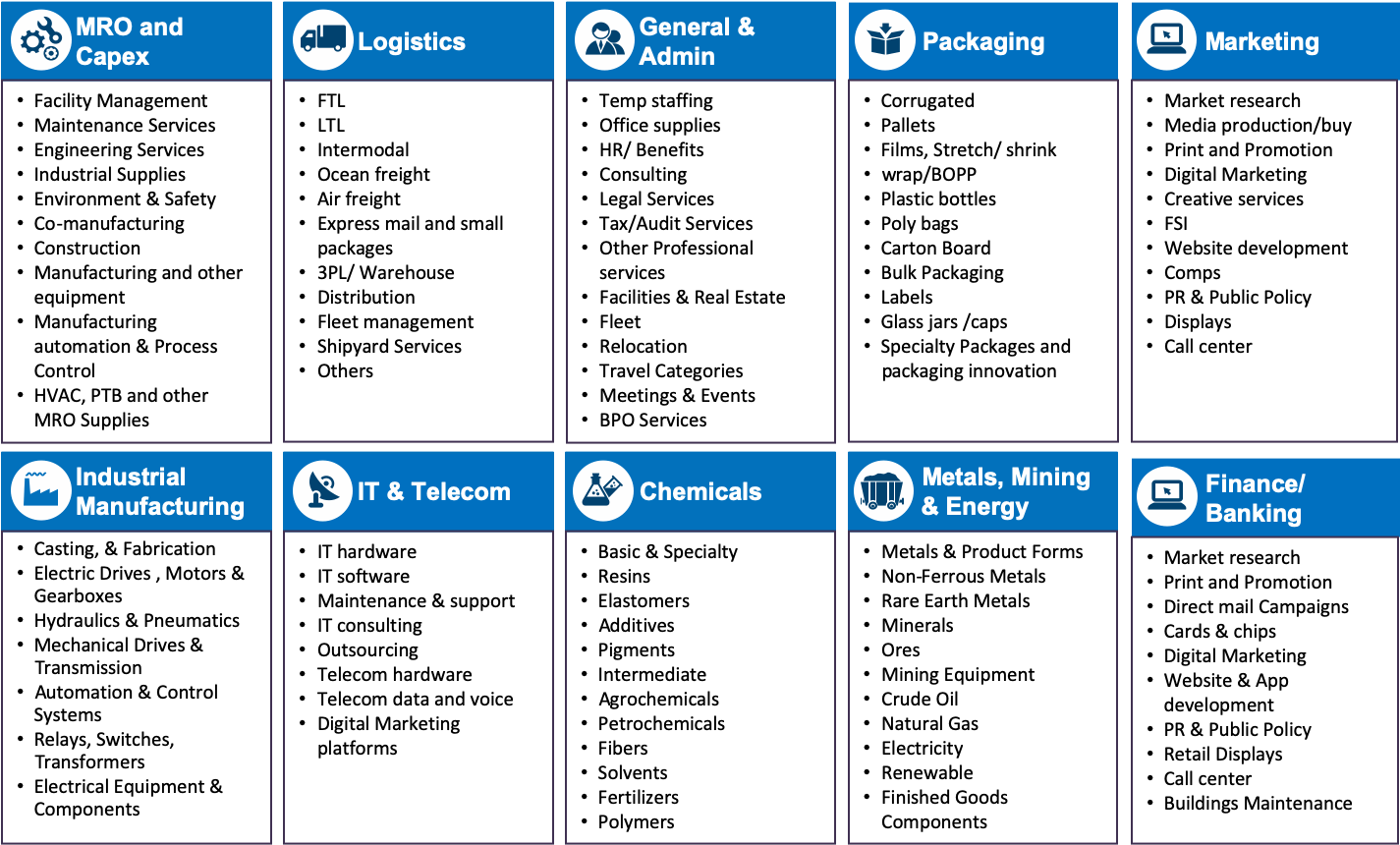
4: Table of the key differences between Project and Category based procurement
The following table outlines some of the key differences between Project and Category based procurement processes.Focus
Strategic or Tactical
Centralised or devolved
Compliance handling
Relationships
Timelines
Sustainability
Change Management
Price
Payment
Delivery
Competences
5: Category-based Procurement Examples
The following chart has some examples of categories and purchases within these categories. (Note: this is not an exhaustive list of all possible categorisation of purchases of goods and services. It does though capture the key categories that Claritum can help to manage.)

6: The inherent challenges of project-based procurement
One of the biggest challenges facing Procurement overall is the fragmentation of the supply chain creating a very diverse supply market from which to source: there exists a large number of suppliers, now on a global basis, with which any firm may do business in the delivery of their requirements (from small specialist companies to large multifunctional firms delivering complete solutions). The challenge is to know which supplier could offer an advantage in the supply of a specific requirement.
In addition to fragmentation, there are many possible challenges for a category specialist. The significance of each of these, of course, varies by category…
Category Procurement Challenge Areas:
- Risk mitigation.
- Dark purchasing (items purchased outside of standard processes.)
- Long process cycles.
- Inaccurate or incomplete data on which to base decisions.
- Managing Supplier-related issues.
- Supplier identification, onboarding and development
- Miscommunication (both internal and external)
- Lack of transparency from suppliers
- Cross-functional buy-in and focus on any transformation or change
- Ensuring adherence on CSR
- Brand image and reputation
- Sustainability
7: Characteristics of good Project Procurement activity
Companies that consistently capture the most value from category procurement typically have these critical procurement capabilities:
- Superior supply-market expertise for procurement of category-based goods and services.
- Automation for Sourcing through to Payment transactional activity.
- Data Analytics linked to business planning and action.
- A category-specific strategy for each category.
- Strong Supplier Relationship Management.
- Awareness of innovative solutions and engagement of suppliers on innovative approaches.
- Early assessment of procurement risks.
- Strong scenario planning and analysis of future trends
- A cross-functional sourcing focus to optimise on efficiency, cost and sustainability. This includes engaging key external stakeholders (for example suppliers)
- A focus on TCO associated with all purchases and the impact of change on profitability.
- Use of RFQs and Contractual terms that are designed to optimise the efficiency and cost of the overall supply chain.

